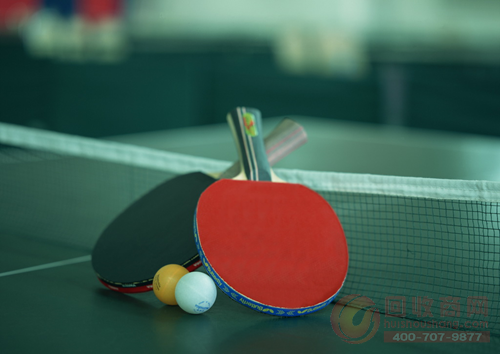China has always been the big country in the Olympic Games, and table tennis as China's national football is naturally an eye-catching project on the Olympics. The raw material for making table tennis, Celluloid, is known as the veteran of the plastics field and has a long history. Three days after the start of the Olympic table tennis, the schedule has also entered a white-hot stage. Today, let's talk about the things of table tennis!
Celluloid, nitrocellulose plastic, is a kind of plastic, made of rubber (low-nitrogen nitrocellulose) and plasticizer (mainly camphor), lubricants, dyes, etc. It is the oldest thermoplastic in history. Resin. Its appearance is colored or colorless transparent or opaque sheet, soft, elastic, water resistant, oil resistant, acid resistant, and has a large tensile strength. The nitrocellulose of nitrate in celluloid is the basic raw material for making gunpowder. It is easy to burn when exposed to fire and high heat. Long-term storage will cause the celluloid to gradually heat up, and if the heat is not dispersed, it will cause spontaneous combustion and poor durability. It is an important raw material for the manufacture of table tennis. The old name is fake ivory.

The manufacturing process of table tennis is very complicated and can be roughly divided into the following 17 steps:
1 minute raw material → 2 extrusion → 3 smoothing → 4 softening → 5 first molding → 6 drying → 7 cutting → 8 thickness measurement → 9 bonding → 10 hot air drying → ? Determination of weight → ? First grinding → ? Dry → ? Second molding → ? Second grinding → ? Inspection, identification →? Seal, produced.
Extrusion and smoothing
The celluloid material weighing more than 100 kg was cut into a sheet having a thickness of 0.8 mm. It is then placed in a press and extruded into a circular sheet. Smooth the surface.
soften
Principle: The main component is nitrocellulose and some lipids, they will dissolve inside, so the pre-cut round-shaped celluloid (nitrocellulose ivory) should be soaked in a solution containing 70% water and 30% alcohol. The wafer is softened to facilitate subsequent processing.
First molding: Put the softened disc into hot water, insert a semi-spherical object of standard radius from below, and make the disc into a semi-circular ball. This step determines 70% of a table tennis quality.
Drying and cutting
After the first molding, these semi-circular balls are immersed in an alcohol solution. It was then taken out and dried for 2 days, and the excess edge of the semi-spherical shape was manually removed.
Measuring thickness
Simple determination of table tennis thickness:
Tools used: scale, a small piece of paper, gel pen measurement method: 1 use a small piece of paper to wrap around the table tennis for a week, use a gel pen to tie a small hole at the joint of the paper strip
2 Use a scale to measure the distance between the two holes, denoted as L
3 Table tennis diameter d=L/Ï€
Bonding
After measuring the thickness, the two matching semi-spherical balls are combined. Apply solvent to the joints, bond them while blending, and finally form a spherical shape. Do not rush to touch after bonding to prevent cracks.
Hot air drying
After bonding, it takes about one week of hot air drying. The table tennis position will be fixed during this period. Thereafter, the weight was measured and distinguished by using 1/100 g as a standard.
After the first grinding, after 30 to 40 days of natural drying, enter the second molding stage. The molding is carried out while heating.
Put the combined ball on the tilting table and perform a rolling test. The linear scrolling mark is Samsung, and the rest is used as a practice ball.
The final selected ball will be printed and officially released, and the entire table tennis production process will be over.
However, there are rumors that: from July 1, 2014, the ITTF will use the new material plastic ball, which is a major equipment reform after 40mm ball, 11-point system and inorganic glue. The major test of the National Table Tennis Team of the Rio Olympics.
The In-Wall Bidet Frame is a sturdy iron frame specifically designed to provide support for wall-mounted bidets. By fitting into the wall, it effectively conceals the bidet's tank and plumbing, resulting in a modern and streamlined appearance for the bathroom.
Beyond its aesthetic advantages, the in-wall bidet frame offers several functional benefits. One of its primary advantages is the enhanced support it provides for the bidet fixture. This is particularly beneficial for larger individuals or those with limited mobility, as the frame ensures a stable and secure installation. The added support contributes to a comfortable and safe user experience.
The in-wall bidet frame is also height adjustable, allowing for customization to accommodate individual preferences and needs. This feature ensures that users can set the bidet at a comfortable height, promoting optimal usability and convenience.
Moreover, the space-saving design of the in-wall bidet frame is highly advantageous, especially in smaller bathrooms where floor space is limited. By fitting into the wall, the frame eliminates the need for additional floor space, effectively maximizing the available area. This can be particularly valuable for compact bathrooms, as it allows for a more efficient utilization of the available space.
In addition to space-saving benefits, the design of the in-wall bidet frame also facilitates easier cleaning and maintenance. With fewer exposed areas and nooks, there are fewer spaces for dust and grime to accumulate. This simplifies the cleaning process and helps maintain a hygienic environment.
In Wall Bidet Frame, Wall Hung Bidet Frame, Wall Hung Bidet Holder, In Wall Bidet Holder
Guangdong Fabia Intelligent Technology Co., Ltd , https://www.fabiaintelligent.com